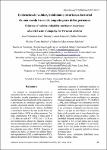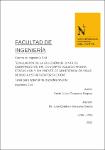Mostrar el registro sencillo del ítem
The construct, convergent and divergent validity, and reliability of three optimism scales among North American university students
| dc.contributor.author | Garcia Cadena, Cirilo H. | |
| dc.contributor.author | Diaz Diaz, Hector L. | |
| dc.contributor.author | Caycho-Rodríguez, Tomás | |
| dc.date.accessioned | 2021-11-17T00:24:10Z | |
| dc.date.available | 2021-11-17T00:24:10Z | |
| dc.date.issued | 2020-06-23 | |
| dc.identifier.citation | Garcia, C. H., Diaz, H., & Caycho, T. (2020). The construct, convergent and divergent validity, and reliability of three optimism scales among North American university students. Psychological Reports, 124(3), 1412-1430. https://doi.org/10.1177/0033294120933144 | es_PE |
| dc.identifier.uri | https://hdl.handle.net/11537/28438 | |
| dc.description | El texto completo de este trabajo no está disponible en el Repositorio Académico UPN por restricciones de la casa editorial donde ha sido publicado. | es_PE |
| dc.description.abstract | ABSTRACT The primary objective of this study is to compare the construct, convergent and divergent validity and the reliability of three optimism scales. The study relied on a nonprobability sample of 100 social work students at Western Michigan University in the United States (Seventy-nine percent of the sample were female, and 21% were male). The sample’s mean age was 26.35 years, SD = 7.70. Sixty-nine percent (69%) of the respondents self-identified as White, and 31% self-identified as African American, Hispanic/Latino, multiethnic, Native American or Asian American. The study used confirmatory factor and multiple regression analyses (CFA and MRA). The findings show that the Life Orientation Test-Revised (LOT-R) and the Personal Optimism Scale (POS) were supported by three indicators of goodness of fit, while the Brief Interactive Optimism Scale-Garcia (BIOS-G) was supported by eight. The LOT-R showed no acceptable internal consistency indicators, but the POS and the BIOS-G showed several good internal consistency indicators. Correlations of all of these scales with the Physical Well-being Scale-Garcia (PWS-G) ranged from r (100) = .303, p = .002 to r (100) = .439, p = .000. The three scales had divergent validity because their scores did not differ by gender (LOT-R: t(100) = −.885, p = .383; POS: t(100) = −.263, p = .794; BIOS-G: t(100) = −.840, p = .407). The findings suggest the advisability of recommending the BIOS-G, which is short and easy to use and understand. | es_PE |
| dc.format | application/pdf | es_PE |
| dc.language.iso | spa | es_PE |
| dc.publisher | SAGE Publications | es_PE |
| dc.rights | info:eu-repo/semantics/closedAccess | es_PE |
| dc.source | Universidad Privada del Norte | es_PE |
| dc.source | Repositorio Institucional - UPN | es_PE |
| dc.subject | Optimismo | es_PE |
| dc.subject | Psicometría | es_PE |
| dc.subject | Estudiantes universitarios | es_PE |
| dc.title | The construct, convergent and divergent validity, and reliability of three optimism scales among North American university students | es_PE |
| dc.type | info:eu-repo/semantics/article | es_PE |
| dc.publisher.country | US | es_PE |
| dc.identifier.journal | Psychological Reports | es_PE |
| dc.description.peer-review | Revisión por pares | es_PE |
| dc.subject.ocde | https://purl.org/pe-repo/ocde/ford#5.01.02 | es_PE |
| dc.description.sede | Los Olivos | es_PE |
| dc.identifier.doi | https://doi.org/10.1177/0033294120933144 |
Ficheros en el ítem
| Ficheros | Tamaño | Formato | Ver |
|---|---|---|---|
|
No hay ficheros asociados a este ítem. |
|||




